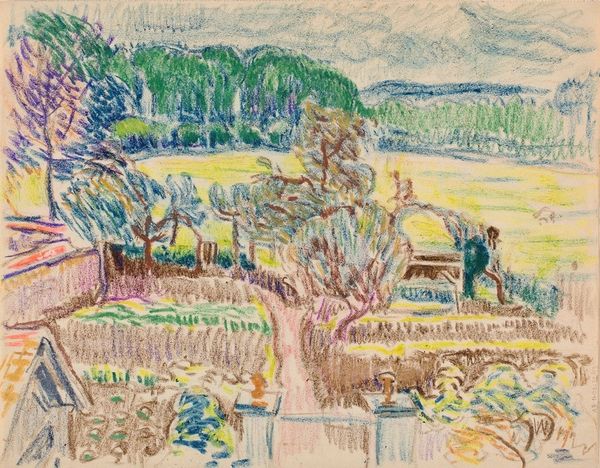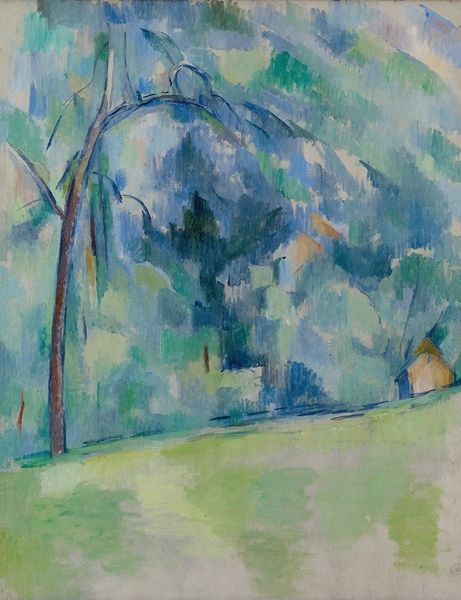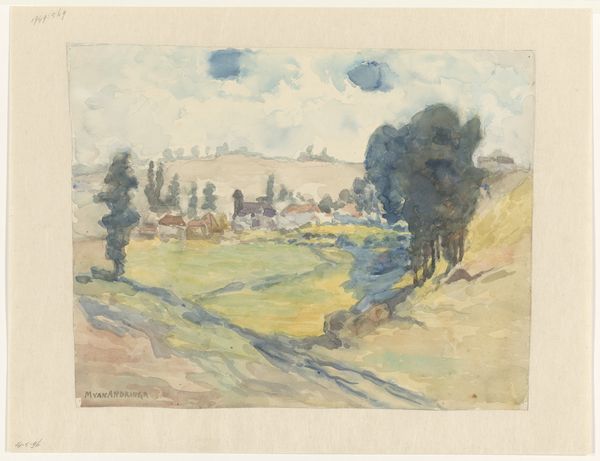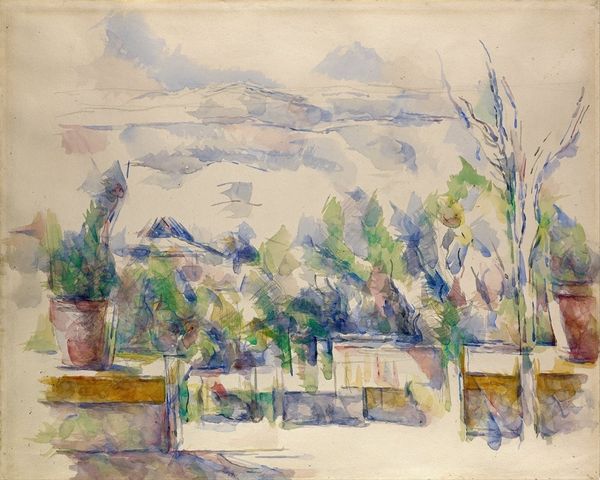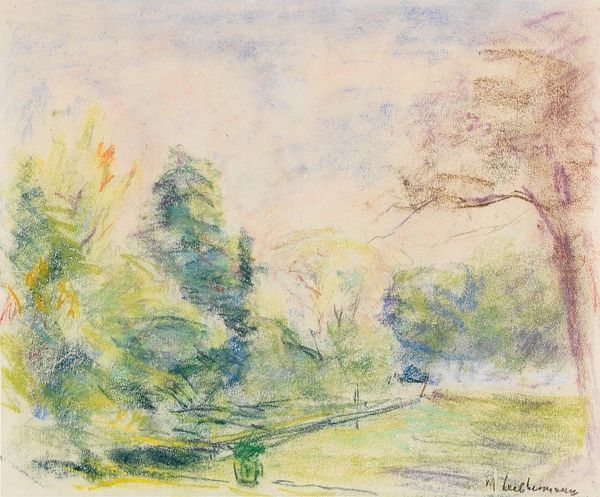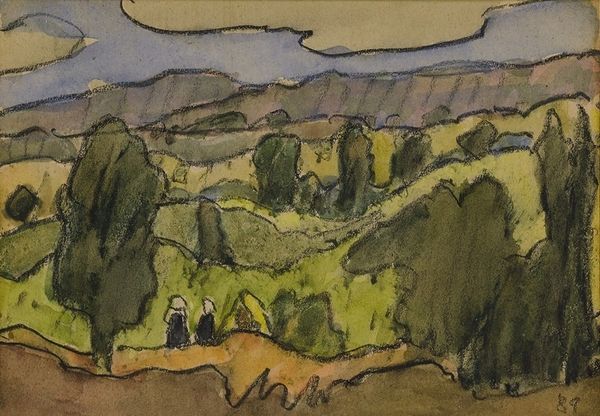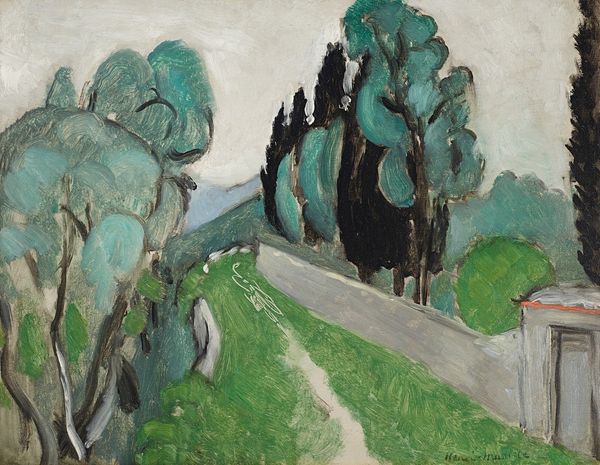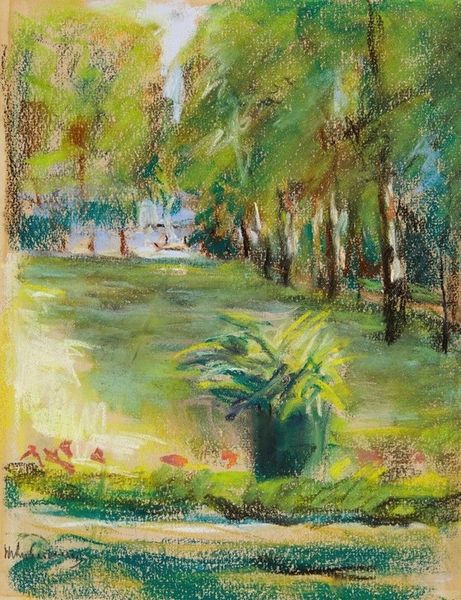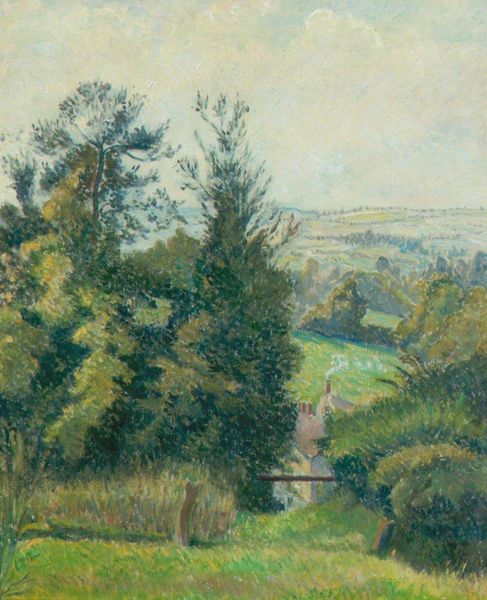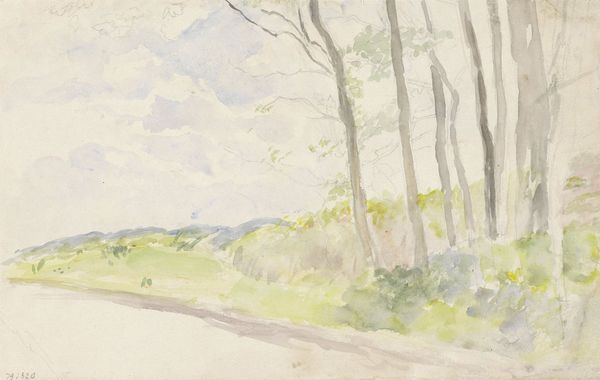
Copyright: Public Domain: Artvee
Editor: Here we have Paul Cézanne's watercolor, *La Côte Du Jallais à Pontoise*, made sometime between 1877 and 1881. It gives me this feeling of a half-remembered dream. It's so light and airy. What do you see in it? Curator: Ah, yes, it is dreamy, isn’t it? Like a fleeting summer afternoon captured in washes of greens and blues. For me, it’s more than just a pretty landscape; it's Cézanne wrestling with form and perception. Notice how he uses those seemingly haphazard brushstrokes to build volume. Does it feel, to you, like he’s trying to capture not just what he sees, but how he *feels* about what he sees? Editor: I see what you mean! It’s like he’s dissecting the landscape into color and shape, like he is interrogating it. It feels more conceptual somehow than simply representational. Curator: Exactly! He’s breaking things down to rebuild them in his own way. And that pushing and pulling between observation and interpretation? That’s pure Cézanne. That’s the root of so much modern art that came after. It makes me wonder: could a painting be a form of thinking? Editor: Definitely gives me something to chew on, thinking about painting as thought. I never looked at it that way before. Curator: I'm so glad. The most rewarding art always leaves us with more questions than answers, don't you think? Editor: Absolutely! It makes me want to grab my own watercolors and head outside. Curator: Perhaps that's the best takeaway of all, wouldn't you say?
Comments
No comments
Be the first to comment and join the conversation on the ultimate creative platform.
